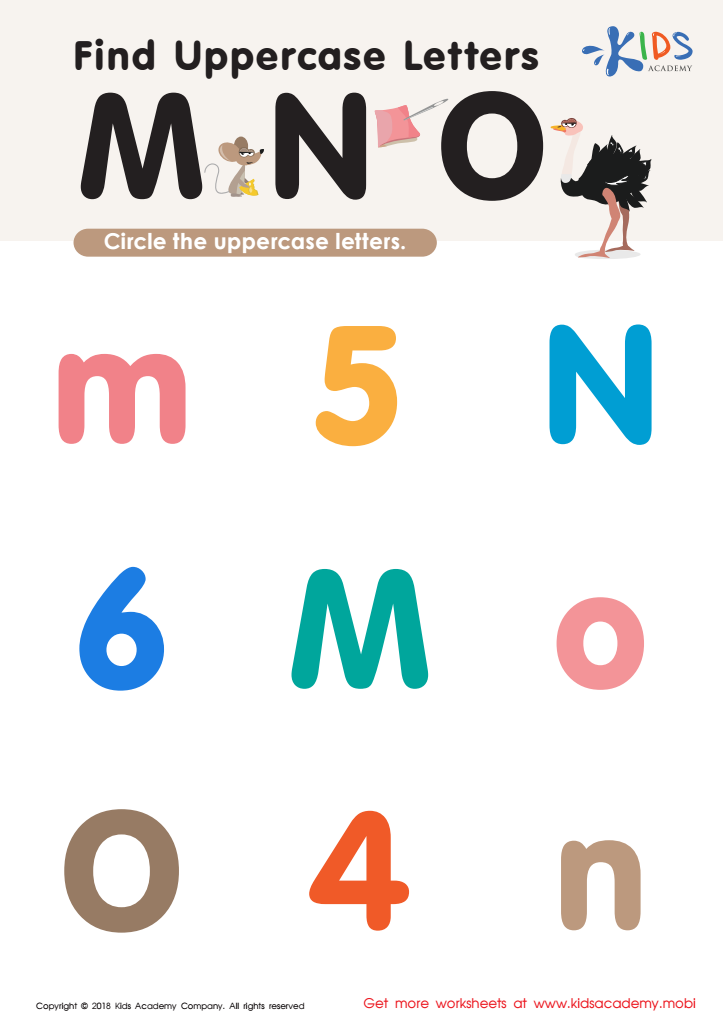Uppercase identification Normal Letter Recognition Worksheets for Ages 5-7
5 filtered results
-
From - To
Enhance your child's literacy skills with our Uppercase Identification Normal Letter Recognition Worksheets, tailored for ages 5-7. These engaging and interactive worksheets are designed to help young learners identify uppercase letters confidently and effortlessly. Each activity is crafted to promote recognition through fun exercises that include tracing, matching, and coloring, making learning enjoyable. Ideal for home or classroom use, our worksheets encourage cognitive development and fine motor skills. Foster a love for learning as your child explores the world of letters, setting a strong foundation for reading and writing. Download and start your educational journey today!


Find Uppercase Letters Worksheet


Find Uppercase Letters J, K, and L Worksheet


Find Uppercase Letters A, B, and C Worksheet


Find Uppercase Letters V, W, X Worksheet


Find Uppercase Letters M, N, and O Worksheet
Uppercase identification and normal letter recognition are crucial for children aged 5-7, a formative period in language and literacy development. At this age, children begin to build foundational skills in reading and writing, making it essential for parents and teachers to emphasize these competencies.
First, uppercase letters serve as key references in learning to read; familiarizing kids with their shapes helps them decode words and recognize significant print, such as names and titles. Being able to identify uppercase letters aids in building word walls, understanding sentence structures, and eventually reading fluency.
Moreover, ordinary letter recognition, encompassing both uppercase and lowercase letters, fosters early writing skills. Children who recognize letters are more likely to begin writing their names and simple words, which boosts their confidence and engagement in literacy activities.
In addition, mastery of letter identification supports cognitive development. It encourages critical thinking and problem-solving as children make connections between spoken sounds (phonetics) and their written forms (orthography).
Overall, supporting uppercase identification and normal letter recognition lays a strong literacy foundation, promotes academic success, and enhances children’s love for learning—an endeavor all parents and educators should prioritize.
 Assign to My Students
Assign to My Students




















